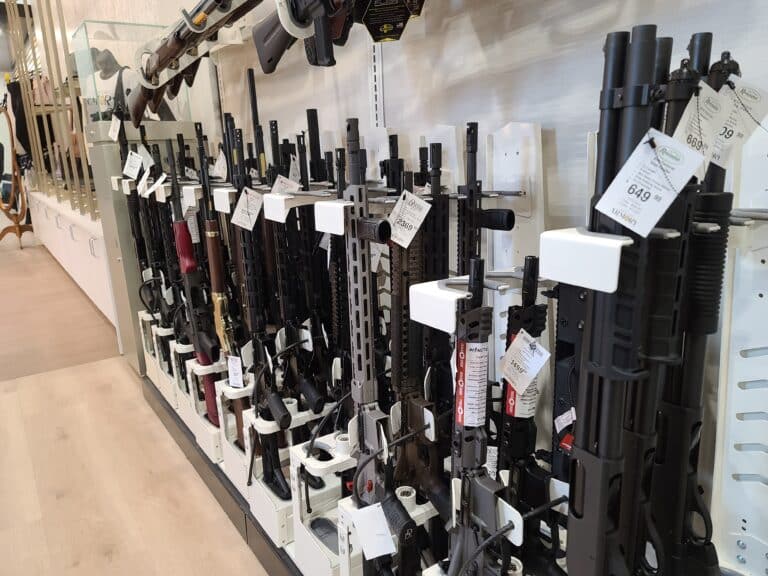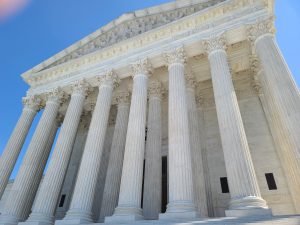The Aloha State can continue to restrict 18-to-20-year-olds from owning guns–at least, for now.
On Friday, that was the conclusion a federal judge reached. US District Court Judge Jill Otake rejected a request from young Hawaiians, gun stores, and the Second Amendment Foundation to block enforcement of the state’s ban on selling or transferring guns to those under 21. She ruled the plaintiffs didn’t meet the high burden needed to win an early-stage injunction but cautioned that doesn’t necessarily mean they couldn’t get there eventually.
“In sum, the Court denies the Motion for Preliminary Injunction and maintains the status quo,” Judge Otake wrote in Pinales v. Lopez. “In doing so, the Court stresses the preliminary nature of the instant ruling, which does not represent a definitive conclusion on the constitutionality of the State’s statutory scheme.”
The ruling is the latest in a long line of decisions debating the constitutionality of age restrictions on gun purchasing, possession, and carry. While it is not the only decision to uphold those restrictions, it runs against the trend of courts’ recognizing 18-to-20-year-olds’ gun rights that extends back even before the Supreme Court set a stricter standard for modern firearms laws in 2022’s New York State Rifle and Pistol Association v. Bruen. It represents a setback for gun-rights advocates trying to eliminate age restrictions but also widens a circuit split–potentially increasing pressure on the Supreme Court to resolve it down the line.
Judge Otake, a Donald Trump appointee, started her analysis of the case by examining if the plaintiffs even have gun rights to begin with.
“The first part of the Bruen test requires the Court to determine whether the plain language of the Second Amendment covers the challenged conduct—here, firearm possession by 18- to 20-year-olds,” she said. “The Court concludes that it does.”
Still, she said that doesn’t mean the ban couldn’t be constitutional.
“Of course, even though 18- to 20-year-olds are part of the people under the Second Amendment, the government may still limit their right under certain circumstances and the State’s evidence of who was part of the national community at the Founding may be relevant to that inquiry,” Otake wrote.
She then looked at laws from the time period surrounding the Second Amendment’s ratification. That did not bode well for the government’s defense, though.
“The State focuses on the Founding Era for the general proposition that people under 21 had limited legal rights, which likely explains an absence of laws regulating their use and/or possession of firearms,” she wrote. “But the State also directs the Court to Founding Era universities’ bans of firearms.”
Judge Otake concluded the government didn’t present “a relevantly similar historical analogue from this period to satisfy its burden.” However, she also noted the state’s “reliance on statutes from the Reconstruction Era renders a different result.”
She cited laws in southern states from the mid-to-late 19th Century as examples of similar under-21 gun bans.
“Around the time of the passage of the Fourteenth Amendment, as many as twenty states prohibited transfer of certain concealable firearms to people under 21 years old,” Judge Otake wrote. “Those restrictions are not ‘outliers’ like Plaintiffs contend. Several states also had blanket bans on transfer to or possession of all firearms for people below certain ages—though most of the ages were much younger than 21.”
She noted the government didn’t provide an exact match for its modern law.
“[T]he State provides no evidence of a blanket ban on transfer of all firearms to people under 21 years old,” she wrote. “In short, there is no ‘dead ringer’ or ‘historical twin’ for the current law.”
Still, Otake argued that the Reconstruction Era regulations were similar in several ways to Hawaii’s modern restrictions. She said the why and how of the older laws were both potentially in the same realm as the state’s current law.
“Historically, the states attempted to address the threat of young people with arms by prohibiting the transfer to—and thus preventing the acquisition by—people under 21 years old of a broad swath of weapons, including handguns,” she wrote. “That states could impose such a burden on young people’s Second Amendment rights, suggests that the State’s current law ‘is consistent with the principles that underpin our regulatory tradition.'”
Otake noted that the Supreme Court’s Second Amendment standard doesn’t require an exact match for modern gun laws to withstand scrutiny.
“The Court recognizes that the State’s current law goes further than the historical regulations but the law is not ‘trapped in amber,'” she wrote. “Whatever reason 19th century policy makers had for excluding long guns from the scope of their age-based restrictions, 21st century legislators need not necessarily make those exact same decisions.”
She concluded the state presented enough evidence of a historical tradition of restricting firearms for those under 21 that the wisest course of action was to leave the status quo in place.
“[D]ozens of Reconstruction Era laws that banned the transfer of handguns to people under 21 years old demonstrate that the State’s age restriction likely accords with the principles of the Nation’s historical firearm regulations,” she wrote. “While reasonable minds may disagree, the Court concludes that Plaintiffs have not met their burden of demonstrating that they are likely to succeed on their constitutional challenge. They’ve therefore failed to show that they are likely to be irreparably harmed absent the extraordinary preliminary relief they seek: enjoining the State’s age requirement, which has been in effect for more than 30 years.”
That’s why she said she wouldn’t side with the plaintiffs.
“In the absence of a strong showing of unconstitutionality, the Court declines to preliminarily enjoin a longstanding age restriction that the State has concluded best protects the public,” Judge Otake concluded.






